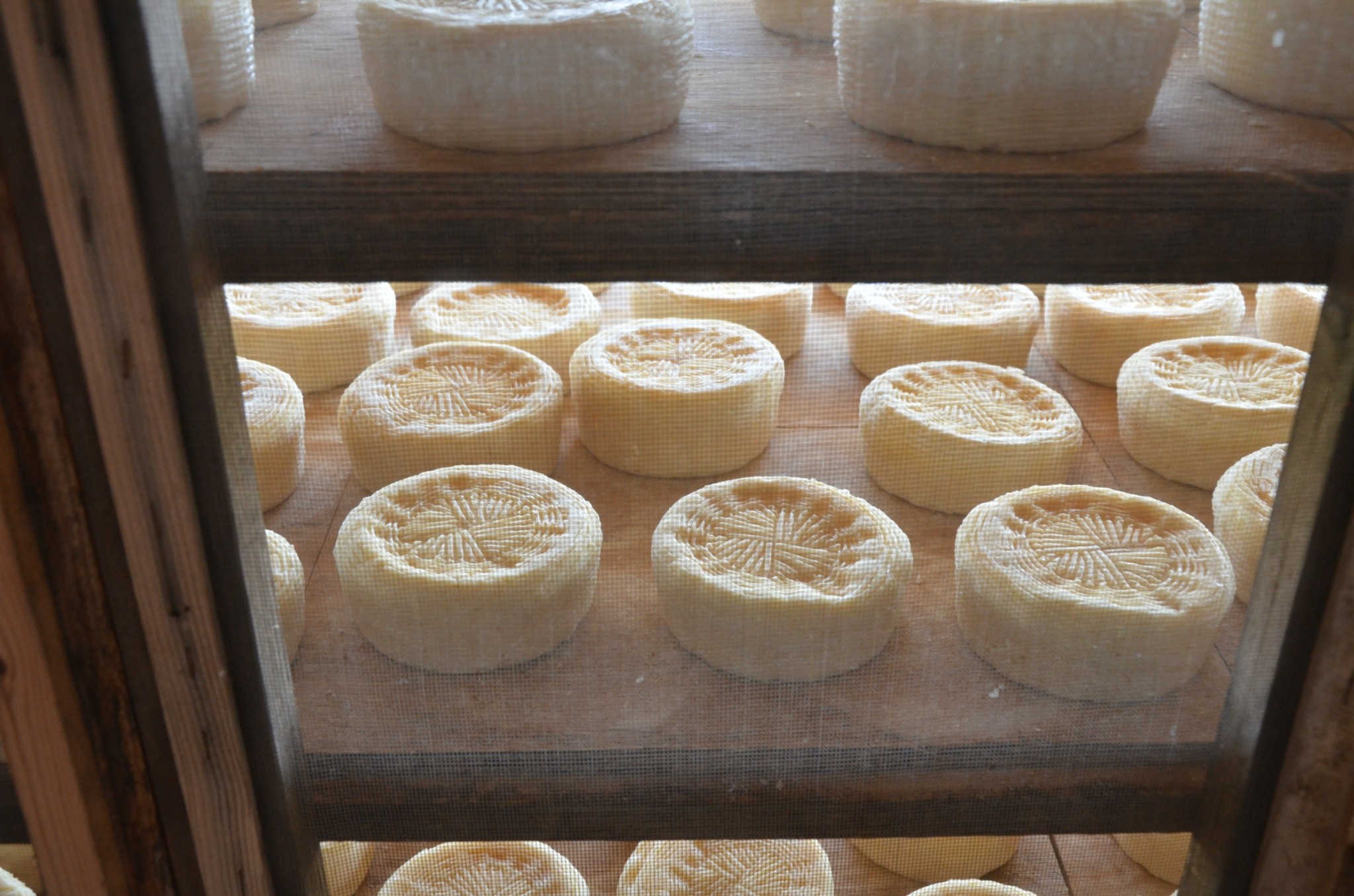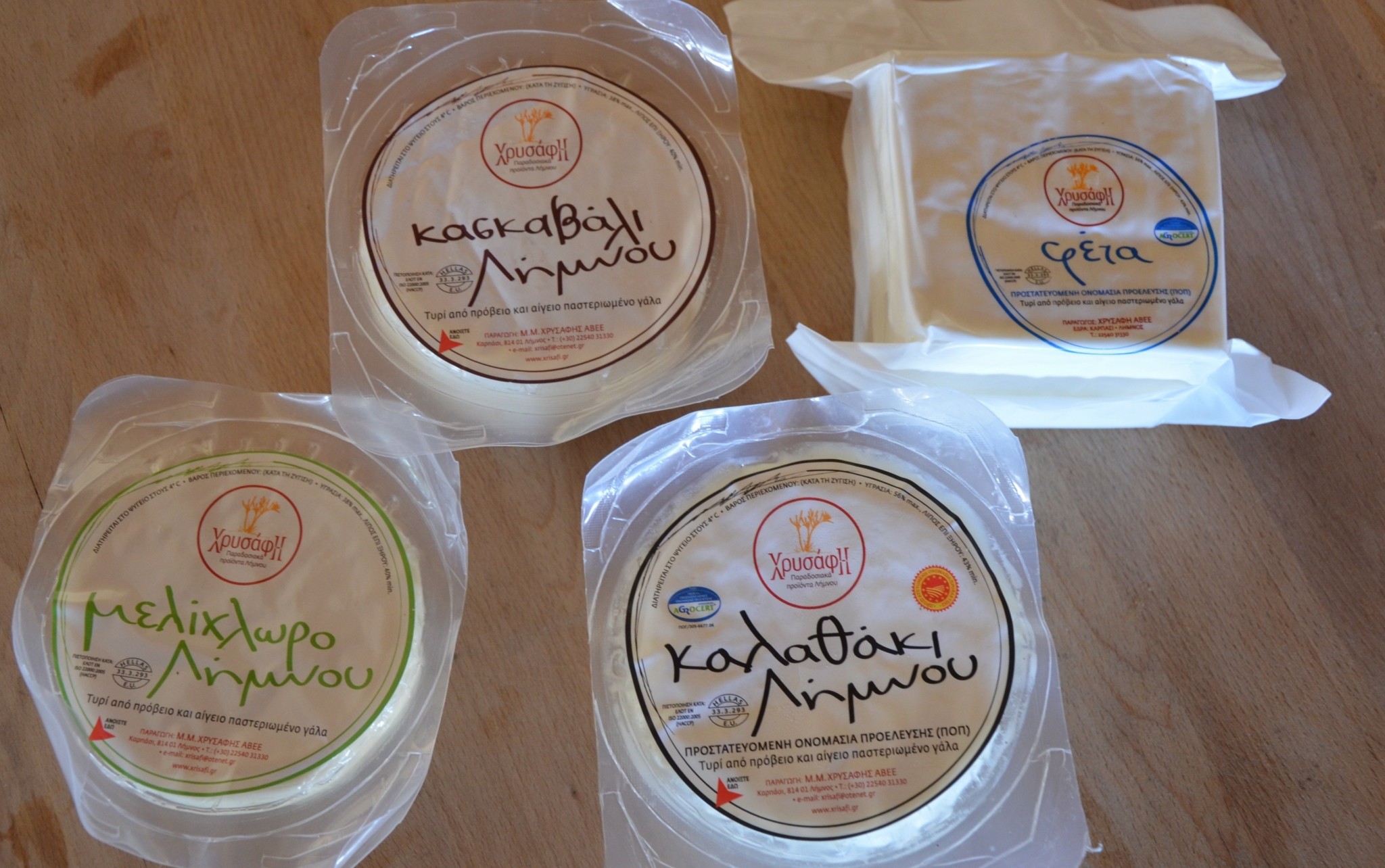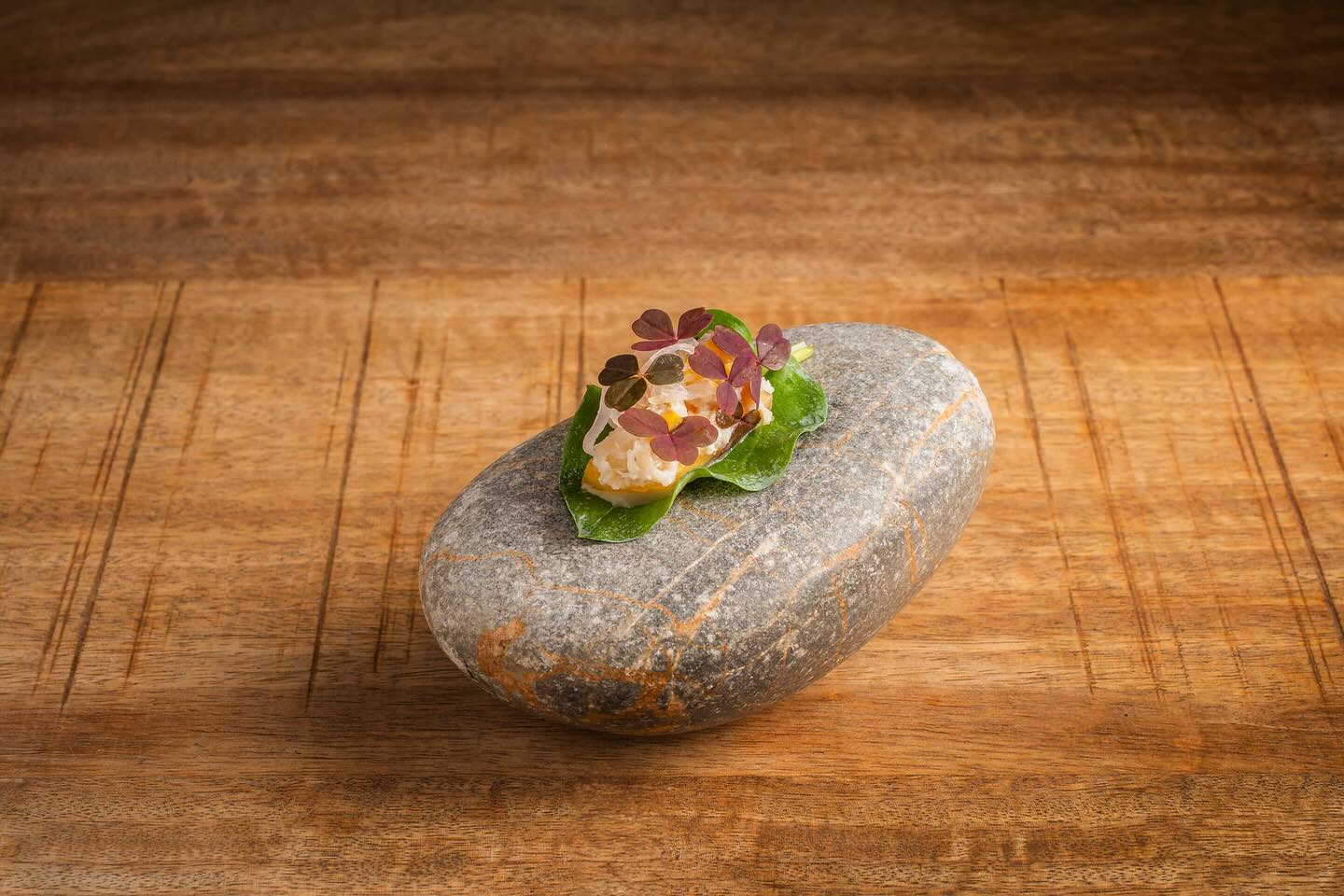A granary serving Athens during antiquity, Lemnos, possessing the largest expanse of fertile plains among the Aegean islands, is a major agricultural and livestock farming island with a deep tradition in cheese production.
Its feta, kalathaki, kaskavali and melihloro cheese varieties are the best-known of many more. Giorgos Pittas offers a detailed profile of the island’s entire cheese range at greekgastronomyguide.gr.
Feta
A PDO product, Limnos feta is hard, salty and has a sour taste. It is produced using the milk of free-range sheep, raised on the island’s pastures.
Kalathaki
Another PDO cheese produced on the island, kalathaki is a white cheese that can be soft or semi-hard. It is shaped like a small basket with the marks of baskets, or moulds, in which it is strained and set. Skinless and compact with scattered holes, its taste is full-bodied, salty and slightly acidic. Kalathaki is made with sheep’s milk as well as a mixture of goat and sheep’s milk.
Melihloro, aka melipasto
Melihloro, also known as melipasto, is made with sheep’s milk, which, after straining,is stored in a shady space during periods of relatively low humidity, following spring, according to greekgastronomyguide.gr, and then left to gradually dry. Initially, the cheese acquires a texture somewhere between moist and dry, and becomes harder during its advanced drying stage. It perfectly accompanies pasta as a grated cheese, can be prepared as saganaki (fried cheese slice) or served as a table cheese.
Kaskavali
A cheese offering intense flavourwith a buttery taste, its roots stretchback to somewhere in the medieval period. It is traditionally dried in wooden crates covered with mesh, at relatively high temperatures – for cheese-drying standards – of over 22 degrees Celsius. It can be consumed as a table cheese, saganaki or grated with pasta.








